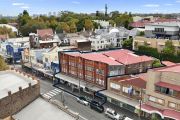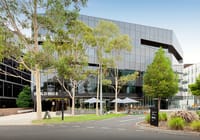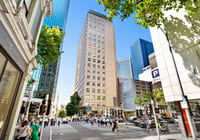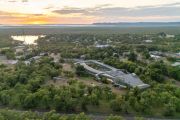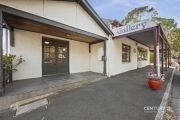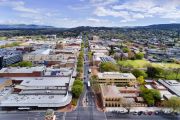
Prices surge on shortage of undeveloped industrial land in Sydney’s inner south
Industrial-zoned land values in Sydney’s inner south have jumped by about 50 per cent in the past 12 months due to a complete lack of undeveloped land in the country’s most expensive industrial property market, new JLL research shows.
While there are 8.6 hectares of undeveloped, unserviced land remaining in the entire southern Sydney region, which extends to Sutherland, JLL’s director of research Sass J-Baleh said there was “none” in the inner-south precinct, which stretches from Alexandria to Botany and Banksmeadow, as a result of sites being acquired and rezoned for mixed-use developments.
“We just don’t have even any of that (undeveloped land),” she told Commercial Real Estate.
Such a shortage is benefiting industrial land owners in the inner south, who have seen record capital growth rates of about 50 per cent across the region.
Botany land prices have shot up by an even higher 60 per cent in the past 12 months, reaching $2100 a square metre for 2000-square-metre lots.
“There’s a very strong inverse relation (between distance to CBD and prices) happening in Sydney, whereas in Brisbane and Melbourne, you’re not really getting that. And the reason for that in Sydney is because you’ve got Port Botany, you’ve got Sydney Airport and you’ve got the CBD all located clustered in that one area,” Ms J-Baleh said.
The record price growth has also been driven by demand from the logistics and retail sectors, coming on the back of record growth of e-commerce in Australia; the online retail trade sector has surged by 33 per cent in the past 12 months – the highest ever achieved in Australia – according to JLL’s latest report The e-commerce Spectrum.
Yet only 11 per cent of Sydney’s total industrial floor space is within 15 kilometres, or 30 minutes, from the CBD, the research found.
Ms J-Baleh believes it is “definitely past that point” where Sydney needs to actively protect its industrial-zoned land from competing uses such as residential development.
“A few years ago, you had the mentality that we’ll rezone all these sites with the hopes that everyone would just move out west which is what was happening; a lot of the large users were moving out west,” she said.
“But now those large users, especially in that logistics space that are servicing the e-commerce sector, are now finding (that they) actually still need facilities in the inner locations. So that demand, although it’s still continuing in the outer western areas, is now coming back into those inner areas that have now all been rezoned.
“And so when you’ve got that huge influx of demand now pushing into those inner areas, you’ve got hardly any land that you can develop, let alone acquire.”
Greater Sydney Commission’s chief commissioner Lucy Turnbull previously raised similar concerns about the diminishing industrial land in metropolitan areas, arguing that concentrating these facilities in the outer west is “not a good outcome”, as it would not efficiently service residents and businesses closer to the Sydney CBD.
The development of unserviced land, which refers to land that is not connected to roads, electricity, water and sewerage systems, depends on whether the public or private sector was willing to pay for it to be serviced.
“If you look at the outer west, a couple of years ago, the land prices there were very low, but it was feasible for them to develop it, to go in, purchase that land and service it themselves,” she said.
“But now that the land prices have gone so high in south Sydney – they’re the highest in the country – it’s not feasible for them to service it, so it becomes that issue of does the government service it and can they provide the infrastructure for that land to actually be utilised; it’s a bit of a stalemate.”
Dark stores
One emerging sub-sector of the industrial property market is dark stores, where retail facilities are not open to the public and are used to store goods for online orders.
In a 10-year leasing deal signed in mid 2017, Coles is paying $2.1 million a year to rent a 7515-square-metre warehouse at 21-23 O’Riordan Street, Alexandria. The rental rate is equivalent to $279 a square metre – about 42 per cent higher than the current average of $196 a square metre.
JLL leasing agent Edward Washer noted that while it was an “outlier” example and that the rates were dictated by the owner, not the market, Coles was “forced to pay above market (rates) to secure the opportunity” due to a shortage of options.
“Effectively, the dark store was to service the eastern suburbs population and inner west,” he said.
“When they have a business of that nature, Coles, where it generates such a large amount of income for them, it wouldn’t have mattered if they paid half that rent or double it. It’s still very profitable, albeit Coles tried to look for another option so that they didn’t have to pay that headline rent, but the location and the type of building it provided outweighed any decision to not proceed.”
There are up to five dark stores across Sydney’s south, west and north, Mr Washer said, signifying a sub-sector “very much in its infancy”.
Most are still staffed to some level, including Coles’ dark store in Alexandria and Woolworths’ one in Mascot, but both are looking to integrate automation down the track as lease renewals come up, Mr Washer said.


